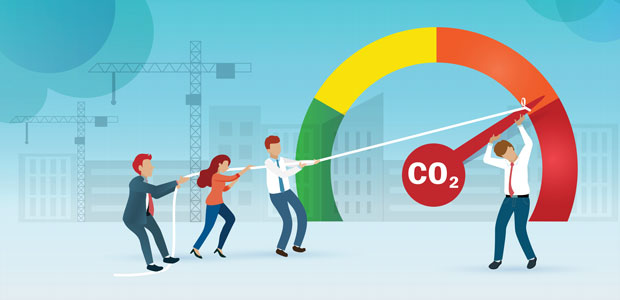
Taking your business carbon negative
Anthony Chadwick, considers himself to be a lucky person, as he is working in something he loves and has wanted since he was eight. As someone who is passionate about people, the planet and the animals that live there, it is the perfect fit for him. Being proud that his profession, veterinary, is at the forefront of developing a holistic one health approach to some of the big problems that face us, here Anthony talks about how this profession is tackling the waste problem and increasing biodiversity.
I was at COP26 in Glasgow in November 2021 when the British government held the presidency of the Conference of the Parties 26. Although world leaders want to limit the increase in temperatures to 1.5°C above pre-industrial levels, I think it unlikely that governments will achieve this, so it is up to us all to make this a reality. Most earth system models suggest that we will use up the carbon available to stay within that 1.5⁰ limit within 8-15 years at present usage so it is incumbent on all businesses to limit their carbon emissions. The climate crisis might be an existential threat to the planet but businesses large and small can do something about it!
But how can you go about it?
If you want your business to be carbon neutral, or negative, measuring the amount of carbon or greenhouse gases your business emits has to be the first step.
Greenhouse gas emissions are divided into different scopes depending on how ‘direct’ they are:
- Scope 1 emissions are direct emissions from your business. This includes emissions from the combustion of fuels from furnaces and vehicles, as well as emissions from chemical production.
- Scope 2 emissions are indirect emissions from the consumption of purchased energy from utility providers. This includes electricity and gas.
- Scope 3 emissions are all indirect emissions not included in scope 2. This includes anything that is linked to your organisation’s operations that are not controlled or owned, such as your entire supply chain, business and employee travel, waste generated, purchased materials and goods, office technology, assets, as well as consumer use of your products.
It can be a complicated process to work out your emissions for each of these scopes. You can use a carbon calculator to work out usage, but we employed a specialist, Eco Offset, to help us with this work. Bear in mind though that you need buy-in from every employee, it can’t be either top-down or bottom-up if you want to be successful. Creating a green team, made up of members form all areas of the business, can be a great way to make sure decisions are implemented.
Once you have completed the usage calculations, then you can start to identify where reductions can be made. There are a number of green energy providers so an easy step is to move to one of them. Energy produced from solar, or wind is a great choice as it is sustainable and not produced from gas or oil power stations. Switching to LED lighting; installing an energy efficient boiler and insulating your business properties all make energy savings. Additionally, installing air source heat pumps and solar panels and battery packs can reduce energy usage.
Using electric vehicles is another way of reducing carbon consumption, particularly if it is combined with a strategy of reducing the amount of journeys needed and maximising the efficiency of those that are taken both of which help to reduce greenhouse gases.
We have attained carbon-negative status by offsetting more than the carbon we produced in the year, buying carbon credits from a reputable company. The dilemma is whether offsetting is where we should be putting our efforts. For sure the most important thing is to reduce our carbon usage as any trees planted will not sequester much carbon for at least a decade. However, planting the right trees in the right places can increase equally important biodiversity. But, providing carbon usage is minimised, then offsetting can have a great social impact. We are supporting a scheme in the Amazon to prevent deforestation and buying solar stoves for women refugees in Chad so that they don’t need to chop down trees for firewood. But do beware, there are sharks out there trying to cash in unethically.
The climate crisis can be overwhelming but we can all make a difference. Once the first step has been taken, the next will follow on. Simply changing energy supplier to renewable sources will have a massive impact that can then be built on. There is so much advice available now and, with today’s emphasis on ESG, can you afford not to take action?

